2018 Hyundai Santro review, road test
The original Hyundai Santro was synonymous with practicality, ease of use and efficiency. Does the new, second-gen car live up to the legendary name?
Updated on Nov 28, 2018 11:18:07 AM
34,758 Views
Follow us on

New car is wider and longer than the original Santro, and isn’t as upright in stance.

Well-finished cabin has a lot of feel-good elements. Black interior with green trim exclusive with Dana Green exterior paint.

Large windows and generous space make rear section feel airy.
We Like
- Roomy and well-finished cabin
- Overall refinement
- Easy to drive
We Don't Like
- Top versions skimp on some features
- Pricier than expected
True to the title of a book that chronicles the first years of its existence, the original Santro really was a car that built a company. A quirky-looking car from an unknown Korean manufacturer (Hyundai was a lightweight in the automotive world in 1998) should have faded into oblivion. But, in reality, things couldn’t have turned out better. The Santro was a runaway success and quickly established Hyundai as a household name in India. The ‘tall boy’ set the foundation for Hyundai’s meteoric growth and today the Korean carmaker is India’s second largest.
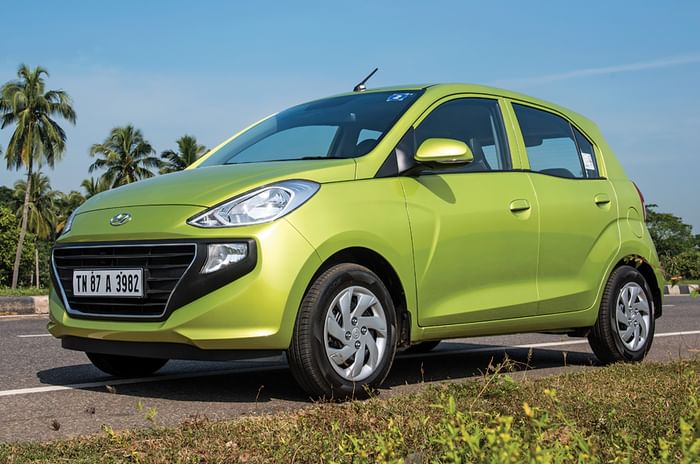
In the 16 years it was on sale, the original Santro sold a whopping 1.32 million units in our market. And now, after a gap of four years, there’s a new Santro in town to take the story forward. The first signs of big success are there, with the new model managing to get 32,000 bookings within a month of launch. Now, if Hyundai can hold on to all those bookings that will be an even greater achievement because the new Santro is not exactly a budget hatchback as the original was.
Prices start at Rs 3.89 lakh and top off at a fairly substantial Rs 5.64 lakh (ex-showroom, India). But do note, the prices will see an upward revision after the first 50,000 bookings. In effect, the Santro’s positioning is more i10 than Eon.
| Hyundai Santro Price, Mileage, Specifications, Features and Variants | |
|---|---|
| Brand | Hyundai |
| Model Name | Santro |
| Hyundai Santro Price | ₹ 5.62 - 7.07 lakh |
| Hyundai Santro Range/Mileage | Petrol : 20.3kpl | CNG : 20.3km/kg |
| Hyundai Santro Specifications | Hatchback | 5 doors | 5 seats View All Specs |
| Hyundai Santro Features | Halogen headlight | 7-inch Touchscreen display | 2 airbags View All Features |
| Hyundai Santro Variants | D-Lite | Era | Magna View All Variants |
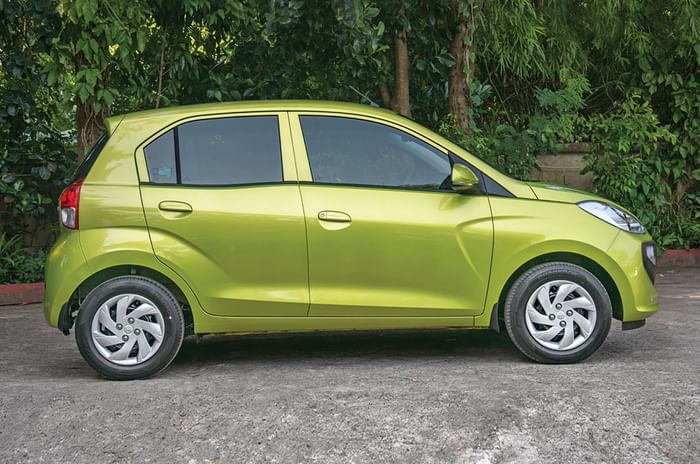
On offer are a petrol-manual, a petrol-AMT (Hyundai’s first-ever AMT) and a CNG-manual. We’re going to put both gearbox versions of the petrol Santro under the scanner to tell you if it delivers on everything that matters.
A high roof defined the original Santro’s design. The new car that’s longer and wider than its predecessor, and whose roof is 30mm lower, is more conventional in shape. Hyundai designers say the look is a new-age reinterpretation of the original tall boy stance, calling it a ‘modern tall boy’ that better addresses the contradictory needs of practicality and style. We’ll talk practicality in the next section of the test, but the styling package, on the whole, sure is polarising.
As has become the norm on new Hyundais, the Santro’s front end is dominated by the signature ‘cascading’ grille that sits low on the bumper. The grille is large as is, but what makes it look larger still is that it extends sideways to encompass the high-set fog lamps. Also unique in its own way is the position of the Hyundai logo on the ‘V’ of the bonnet (flanked by the sharply cut headlights) rather than on the grille. While some find the Santro’s face chic, there are many who think it is overdone and disproportionately wide. Then again, the original Santro’s awkward styling was pretty controversial too.
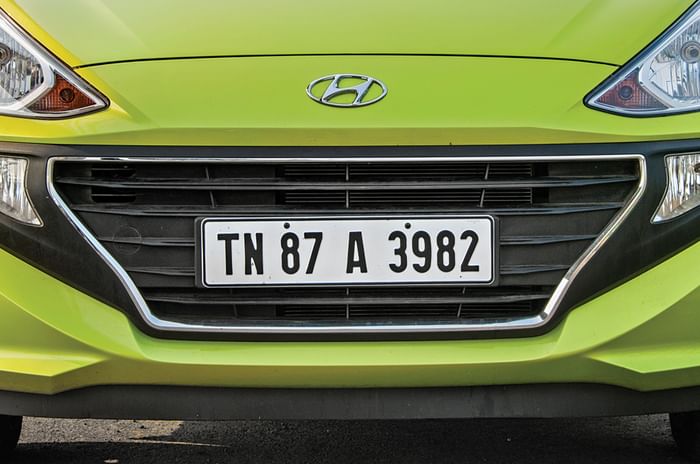
There are some interesting, if also less controversial details at the sides. The bodywork is embellished by a boomerang-like detail near the front wheel arches, there’s a neat arc above the rear wheel arches and there’s also a pronounced crease lower down on the doors. These design elements seem a bit overdone on a car so small but they certainly get your attention. Also unique is the kink in the window line at the rear doors. It’s not only a stylistic touch but it serves a practical purpose too by making the glass area bigger and hence enhancing the view out for rear passengers. The flimsy, lift-type door handles tell you where costs have been saved, and even the top-spec trim cars do without alloy wheels. What’s also less than impressive is the Santro’s rear end. The small tail-lights look too basic and it’s only the smartly done bumper that adds some style at the rear.
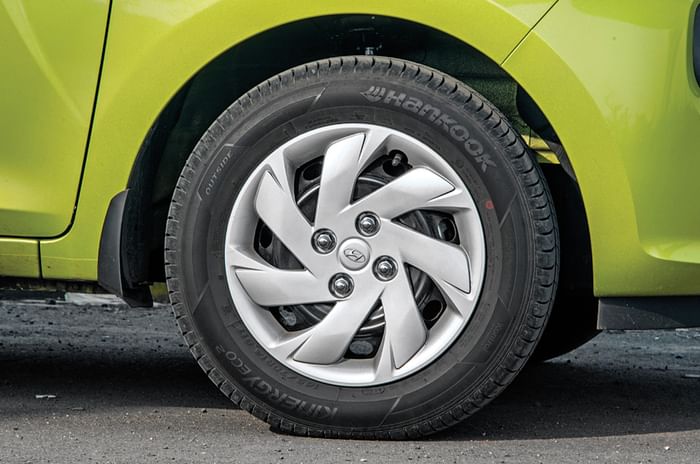
Under the skin, it’s largely only the 1.1-litre, four-cylinder petrol engine that links the old and new Santros. The new one actually uses the Grand i10’s K1 platform as its basis. Sixty-three percent of the body is made of advanced high-strength steel and high-strength steel that, Hyundai says, is not only relatively rigid and light but also helps refinement. To further keep external sounds to a minimum, there’s insulation on the firewall and floor, and a double-sealing weatherstrip has been used on the doors and body too. Elsewhere, the Santro is fairly standard fare. It uses an electric power steering, the suspension is a combination of front MacPherson struts and a rear twist beam, and braking is via front discs and rear drums with standard ABS and EBD.
You don’t quite walk into the new Santro as you would into the cabin of the original car but ingress and egress are still very convenient. The driving position is a one-size-fits-all affair. There’s no seat-height adjust and the steering position is fixed – your comfort level behind the wheel is a function of your height. Shorter drivers will like the elevated driving position, while taller drivers will find the seat set a touch too high and the steering a bit low. It’s a similar story with the front seats; they work just fine for drivers of average height but larger-framed individuals might find their perches inadequate in shoulder support, and the fixed headrests small. The high-set gear lever does fall easily to hand but the switches for the power windows at its base are out of sight and not conveniently placed. That the buttons are not even backlit makes them harder still to locate in the dark. Again, the power window cluster has been centrally placed in one unit to save costs.
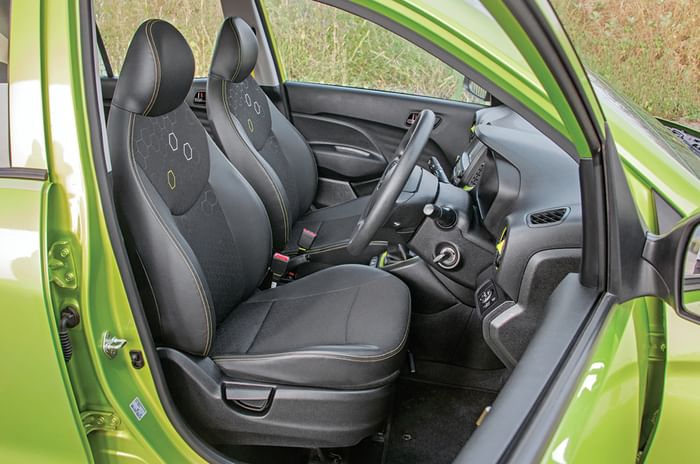
The aforementioned ergonomic anomalies aside, the Santro’s cabin does score for look, feel and quality. Note, only Santros in the Dana Green exterior colour (as our test car) get all-black interiors with green detailing on or around the air-con vents, gear lever, front seatbelts, and seats. A premium-looking beige-on-black interior theme is standard with other colours, with champagne gold embellishments jazzing up the cabins on mid-spec and top-spec versions. The larger surfaces are well finished and panel fit is by and large consistent.
Like every other Hyundai, the Santro’s dashboard (with what its designers call an ‘elephant-inspired’ fascia) is well laid out and user-friendly. The infotainment system (read entertainment box) sits high up and in easy view, and is flanked by vertically oriented centre air-con vents that are easy to operate. Even richer in look are the rotary side vents that seem like they belong in a Mercedes-Benz A-class. Other nice bits include the crisp control stalks, the instruments console that features a multi-info display as standard and the good-to-hold steering wheel with its audio and phone buttons. But small compromises have been made here and there to keep costs down. There’s no chrome on the Hyundai logo on the steering, the knobs for the air-con feel a bit rudimentary, and there’s no lock/unlock button.

On a long journey, your co-passenger will miss the absence of a second cupholder up front. You do get a well-sized glovebox, there’s a well thought out shelf on the passenger’s side of the dash to keep your mobile phone, and each door houses a 1-litre bottleholder too.
At the back, the Santro is surprisingly roomy. There’s enough head- and kneeroom for a six-footer to sit in comfort, and the large windows really do allow a great view of the world outside. Seating three abreast might be a squeeze but the floor is almost flat and even the rear air-con vent isn’t too intrusive. Yes, you read that right. The Santro debuts a rear air-con vent in this segment of hatchbacks, and it does its bit to cool the cabin faster. Some might find the seatback a touch too reclined and the seat cushioning to be on the softer side, but the bigger issue is with the small headrests that simply won’t offer enough protection against whiplash injuries in the event of an impact. And that’s a shame.

Behind the rear seat is a 235-litre boot. There’s enough space for a large suitcase and you can fold the rear seat’s backrest to make space for more luggage. The loading lip is high so loading and unloading can be bothersome. What’s also irritating is that there’s no button-operated release on the tailgate; you either use the key or the boot release besides the passenger’s seat. True, these are features that are not common in this segment, but, being a Hyundai, we expected the Santro to have these conveniences.
The new Santro has been launched in five trims but only the petrol-manual car is available in all five options. The petrol AMT and CNG models can only be had in mid-spec Magna and Sportz trims.
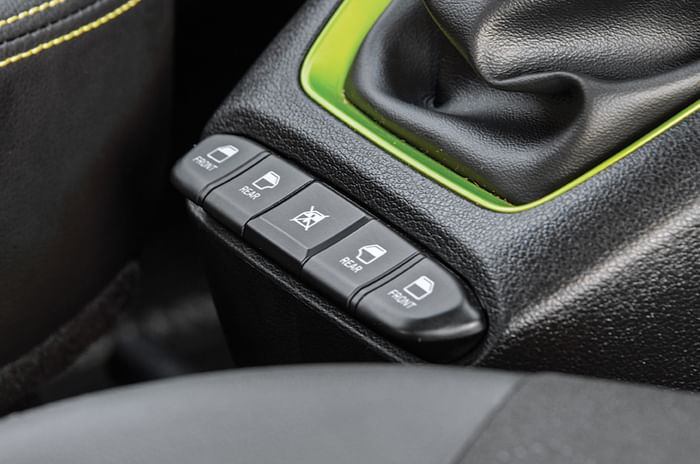
The entry D-lite trim (Rs 3.89 lakh) is absolutely barebones and includes few features beyond its electric power steering, multi-info display, and folding rear seat. Era trim (Rs 4.24 lakh) cars add in body-coloured bumpers, air-conditioning, rear air-con vents, front power windows and a 12V power socket. Central locking, rear power windows, and a day/night rear-view mirror are some of the features on the mid-spec Magna (Rs 4.57-5.23 lakh) cars. However, not all Magnas are the same, with only the AMT version getting a Bluetooth audio system and steering audio and telephone buttons. A 7.0-inch touchscreen is the talking point on the well-specced Sportz trim (Rs 4.99-5.64 lakh) that also gets larger 14-inch wheels with full wheel covers, fog lamps, electrically adjustable mirrors, remote locking, and a rear defogger. A rear wash/wipe is exclusive to the fully loaded Asta (Rs 5.45 lakh) and it’s also the only one with a passenger side airbag, rear parking sensors, a reverse camera, speed-sensing auto door lock, impact-sensing auto door unlock and front seatbelts with a pre-tensioner and load limiter. Reverse sensors will be rolled out across the rest of the range to meet new norms in 2019 but it’s disappointing that lower versions don’t go above the minimum requirement of a driver’s side airbag.

In times when downsizing is the buzzword, it’s unusual for a mass-market hatchback to be launched with a four-cylinder engine. In fact, the Santro is the only car with a four-pot engine among its peers; all its closest rivals are powered by three-cylinder units. Thing is, the Santro’s 1.1-litre engine is not new and is actually the same unit that powered the Santro Xing and i10. Hyundai did have newer engines from the Kappa family to choose from but they would have worked out to be too expensive. The Santro’s cast iron block and three-valve-per-cylinder engine might not be cutting edge but it has been upgraded and is also future-proof in the sense it can be made to meet BS-VI emission standard when the regulations kick in in 2020. The engine’s 69hp and 99Nm are par for the course for this class but are far from the Tata Tiago 1.2 petrol’s class-leading 85hp and 114Nm.
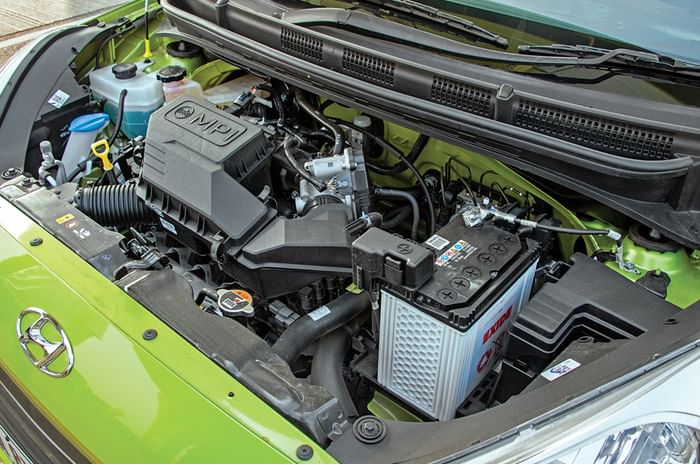
The very first point of note when you start up the Santro is how refined the engine is. There’s little noise from the engine bay at idle and there are no vibrations, the likes of which you’d experience in the Santro’s three-cylinder rivals. The petrol-manual Santro doesn’t race off the line like its shorter-geared predecessor with the same engine did. Performance on the new Santro is measured up to 2,000rpm, at which point the engine ‘opens up’. It’s the mid-range that the Santro feels most comfortable in; there’s enough performance on tap to keep up with the flow of traffic and overtake when need be. It may not feel it but the Santro is among the quicker cars when talking in-gear acceleration. It’s as quick as a Datsun Go from 10-30kph in second, almost at par with the Celerio from 20-40kph in third (the Maruti is faster from 30-50kph in third) and is just shy of the Celerio’s class-best 60-80kph in fourth gear. And, if only for academic interest, the Santro’s 0-100kph time of 14.85sec is second only to the Celerio’s 14.24sec figure.
The Santro is by no means a sporty car and there’s not much to gain by extending the engine to the upper reaches of the rev range. Do so, and you’ll experience the engine’s less happy and noisier side. Likewise, the five-speed manual gearbox isn’t suited to quick shifts and isn’t the smoothest unit from Hyundai either; that it is light and comes allied to a clutch that requires little effort is more pertinent here.
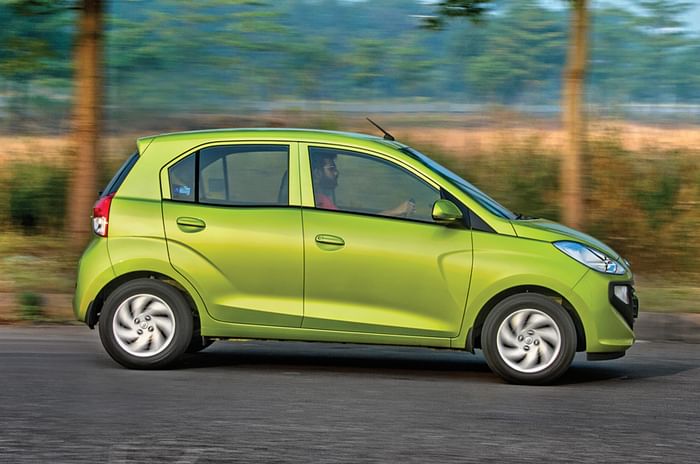
The Santro automatic that removes the clutch pedal out of the equation entirely is also more than satisfactory. The automated manual transmission has been developed in-house by Hyundai and is based on the manual’s 5-speed gearbox. It’s not perfect but is superior to most other AMT systems out there. There is a pronounced pause between the first and second gears, which is annoying in stop-and-go rush-hour traffic. However, the shifts smoothen out in the higher gears; you get less of that head nod AMTs are notorious for and, in general, the auto shifts are timely. Even Creep mode works well and the transition from off throttle to on throttle is smooth too. There’s no Sport mode but you can use the gear lever to affect manual shifts, and it is quite responsive to manual inputs too. Where the AMT gets caught out is on inclines. There’s significant rollback before the clutch engages and, on really long climbs, the gearbox also seems indecisive of the right ratio to be in. To be fair, these are issues on all budget-car AMT systems.
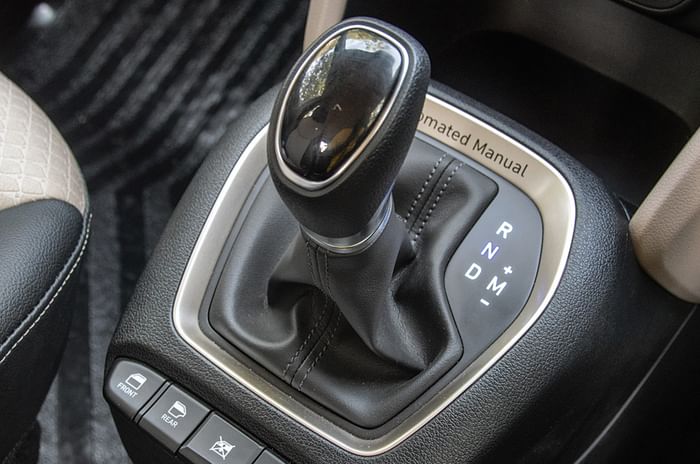
A light steering, small turning circle and good all-around visibility make the Santro a friendly car to punt around town in. Ride comfort at city speeds is also a strength. It feels a bit jiggly at times on uneven surfaces, but low-speed bump absorption is good, and what’s really impressive is how quietly the suspension goes about its business.
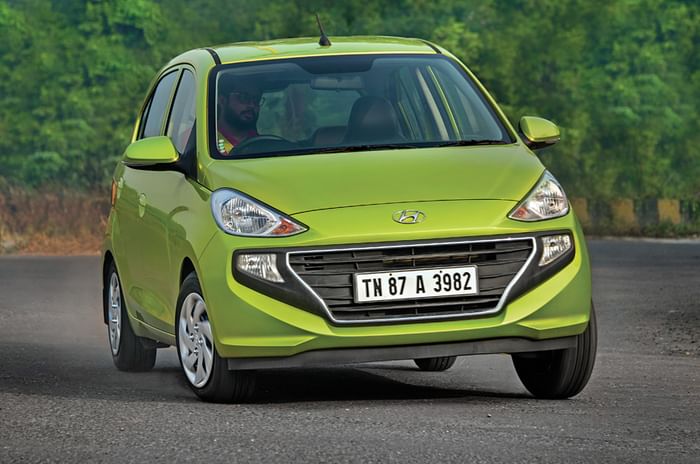
Even at higher speeds, road and wind noise are well contained by segment standards. The Santro is fine for highway use but, at cruising speeds, it doesn’t quite give you the same confidence as something like a Tata Tiago. Sure, straightline stability is not a cause for complaint but the softly sprung Santro tends to amplify small surface crests and waves taken at speed. With a full load of passengers, you’ll notice how the rear end tends to bob at high speeds, in its own way drawing attention to the small-sized headrests at the back. Brake performance is adequate and our tests cars’ Hankook tyres provided ample grip but you don’t get an absolutely reassuring feel at the helm in panic braking scenarios. Go hard on the brake pedal and there’s a moment of nervousness from the car before it restores its composure while shedding speed.
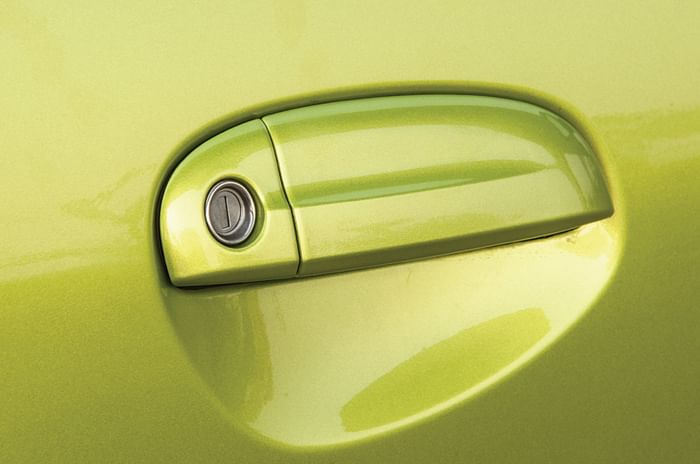
Steering feel is like the Hyundais of old – which means there’s an inconsistency to the weight – but
it’s also something unlikely to play on the mind of the average Santro buyer. Just wish the steering had a stronger self-centering action.
Given that the petrol Santros’ ARAI-tested fuel economy figures of (20.3kpl for both manual and auto) are lower than rivals’, we weren’t expecting them to top the efficiency charts either. And they don’t. Still, the Santros are quite efficient. The petrol-manual Santro delivered 12.69kpl in town and 19.12kpl out on the highway. The AMT couldn’t quite match the manual’s figures as claimed but wasn’t too far behind either, returning 11kpl and 18.6kpl in our city and highway test loops, respectively. Buyers looking for lowest running costs would do well to consider the CNG version of the Santro that has an ARAI-tested figure of 30.48km per kilogramme of CNG.
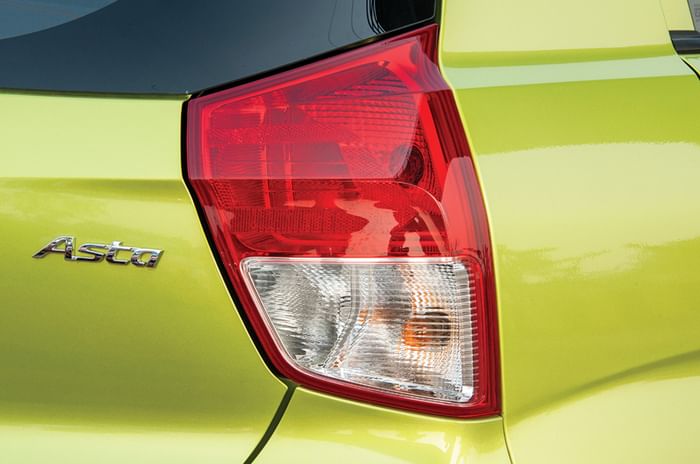
Base trim Santros don’t get an audio system, Magna-spec AMTs get a simple Bluetooth unit but it’s the Sportz and Asta cars that go the whole hog with a 7.0-inch touchscreen infotainment system. It’s a very impressive system in touch response, layout and user friendliness. There’s no onboard satellite navigation but you can use maps via Android Auto and Apple CarPlay that it comes bundled with. Sound quality is fair.
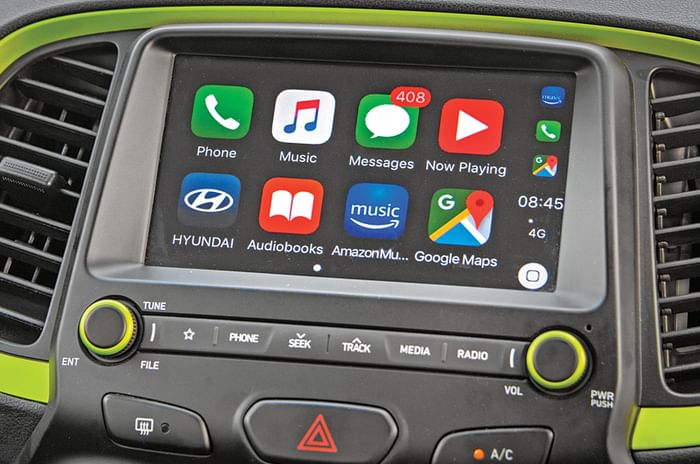
Let’s first get this out of the way. Good as the new Santro is, it’s not as revolutionary a product as the original was back in 1998. Sure, the new car is built for a different time and even a different buyer but it conforms to what’s expected in the class rather than changing the game.
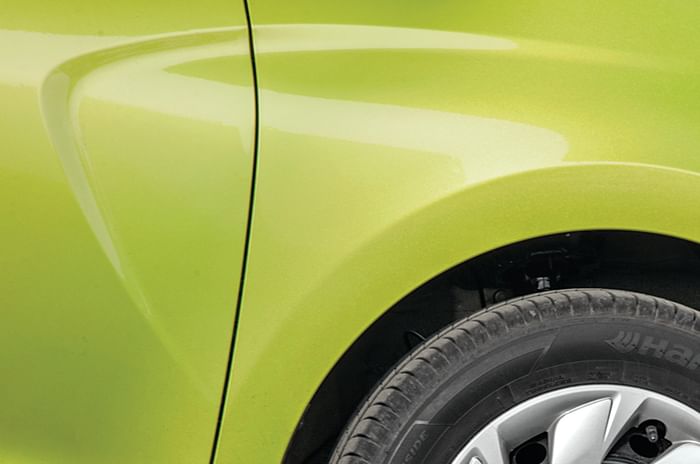
But such a comparison is for an automotive market observer. A car buyer will have a lot to like in the new Santro. It’s easy-to-drive, comfortable, refined and even feels relatively premium. Even the AMT version, that’s garnered 30 percent of bookings so far, works well as a city car. And Hyundai has packed in quite a few features too; you do pay considerably for the goodies on higher-spec models, though. We’d have liked to see more safety features as standard and even things like alloy wheels and more adjustment for the seat and steering are missed. Pricing frankly isn’t as aggressive as we would have liked, especially the higher variants which can get expensive. However, factor in the standard three-year/1,00,000km warranty, three-year roadside assistance programme and the promise of low maintenance costs, and the Santro’s price tag becomes a little easier to justify.
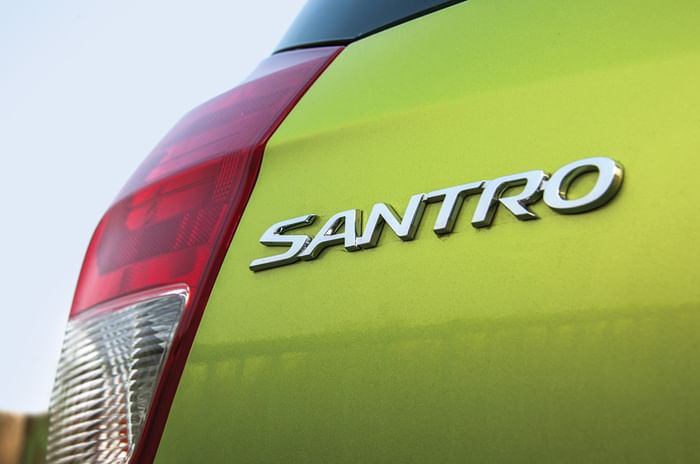
Whether the new Santro will live up to its tag line of ‘India’s favourite family car’ or not, remains to be seen, but it sure has most of the ingredients in place.
Also see:
Copyright (c) Autocar India. All rights reserved.

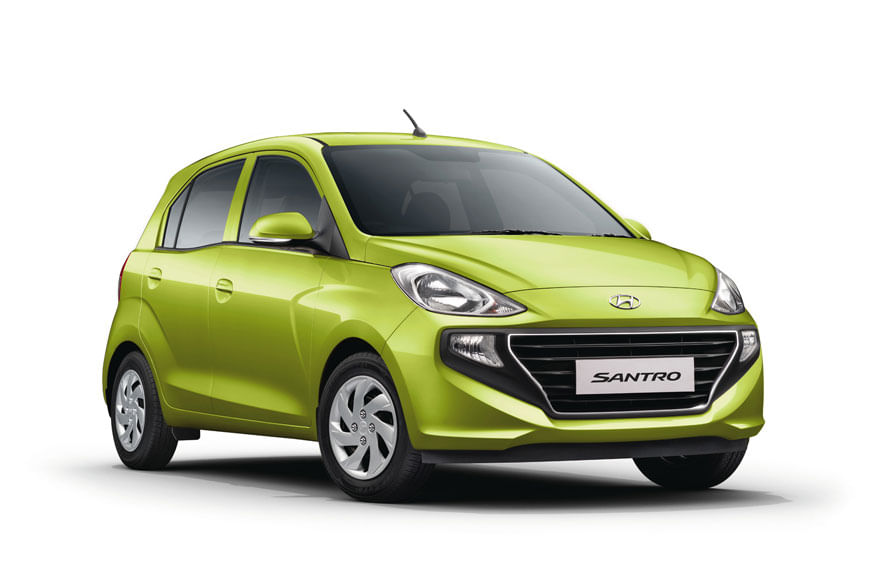







Comments
Member Login
Personal Details
No comments yet. Be the first to comment.